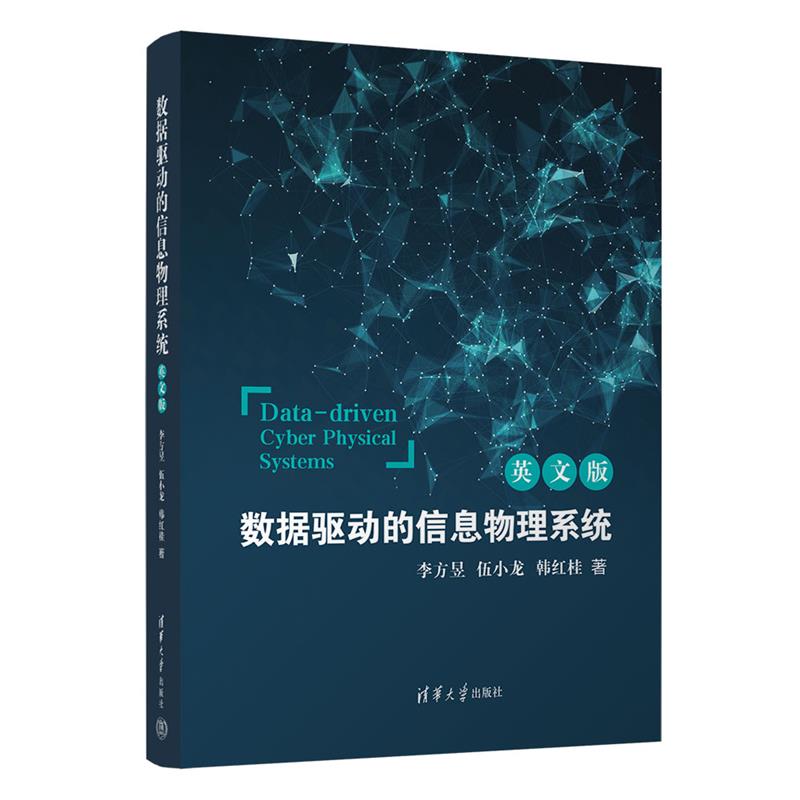- ISBN:9787302669388
- 装帧:一般胶版纸
- 册数:暂无
- 重量:暂无
- 开本:其他
- 页数:372
- 出版时间:2024-08-01
- 条形码:9787302669388 ; 978-7-302-66938-8
本书特色
全面覆盖信息物理系统及其应用,聚焦数据驱动的信息物理系统设计方法,探讨当前信息物理系统研究趋势和未来方向。
内容简介
"《数据驱动的信息物理系统(英文版)》聚焦于数据驱动CPS系统的原则、设计和实现,涵盖了数据采集、分析和建模、机器学习和人工智能、网络与分布式计算以及网络安全等主题。《数据驱动的信息物理系统(英文版)》全面介绍了开发数据驱动信息物理系统所使用的**进的技术和方法,以及它们在制造业、医疗保健、交通运输和能源等各个行业中的应用。 "
目录
作者简介
李方昱,北京工业大学教授,博士生导师,国家海外优青、国家重点研发计划青年科学家,长期致力于数据驱动的复杂系统模型构建与分析研究,主持国家重点研发计划项目、国家自然科学基金面上项目多项,在权威国际期刊上发表SCI论文90余篇,ESI高被引论文3篇,入选斯坦福全球前2%**科学家榜单。 伍小龙,北京工业大学副教授,硕士生导师。从事大数据分析、 人工神经网络设计、智能特征建模、 智能控制等方向的研究。曾获中国自动化学会优秀博士学位论文奖,中国自动化科技进步一等奖,中国发明协会创业奖×创新奖一等奖,曾在国内外期刊及会议上发表学术论文30余篇,参与撰写专著2本,现任中国自动化学会青年工作委员会委员,中国环境感知与保护自动化委员会委员。 韩红桂,北京工业大学教授,博士生导师,国家重点研发计划项目首席科学家、国家自然科学基金杰出青年科学基金项目获得者、国家自然科学基金优秀青年科学基金项目获得者、中国自动化学会青年科学家,长期从事复杂系统智能优化运行控制理论方法和关键技术的研究。现任“数字社区”工程研究中心主任、“计算智能与智能系统”北京市重点实验室主任等,兼任中国自动化学会环保自动化专业委员会秘书长、中国自动化学会过程控制专业委员会委员。
-

发电厂电气部分
¥34.6¥58.0 -

植物进化的故事
¥19.9¥59.0 -

赶往火星:红色星球定居计划
¥44.5¥58.0 -

数控车工
¥5.9¥11.5 -

低空无人机集群反制技术
¥82.6¥118.0 -

数据驱动的剩余寿命预测与维护决策技术
¥63.4¥79.0 -

手术机器人导航与控制
¥127.4¥169.8 -

射频干扰袖珍手册
¥18.4¥29.0 -

汽车车身构造与修复
¥30.7¥45.0 -

群目标分辨雷达初速测量技术
¥42.4¥69.0 -

秸秆挤压膨化技术及膨化腔流道仿真研究
¥40.6¥55.0 -

NVH前沿科技与工程应用
¥109.7¥159.0 -

电力系统分析
¥23.8¥38.0 -

继电保护原理
¥30.4¥49.0 -

不确定条件下装备剩余寿命预测方法及应用
¥60.4¥99.0 -

船舶分段装配
¥58.6¥80.0 -

基于深度学习的复杂退化系统剩余寿命智能预测技术
¥54.4¥89.0 -

火星探测器轨道动力学与控制
¥59.8¥98.0 -

美军联合作战弹药保障
¥35.8¥58.0 -

工程造价全过程管理系列丛书 工程结算与决算 第2版
¥37.4¥56.0













